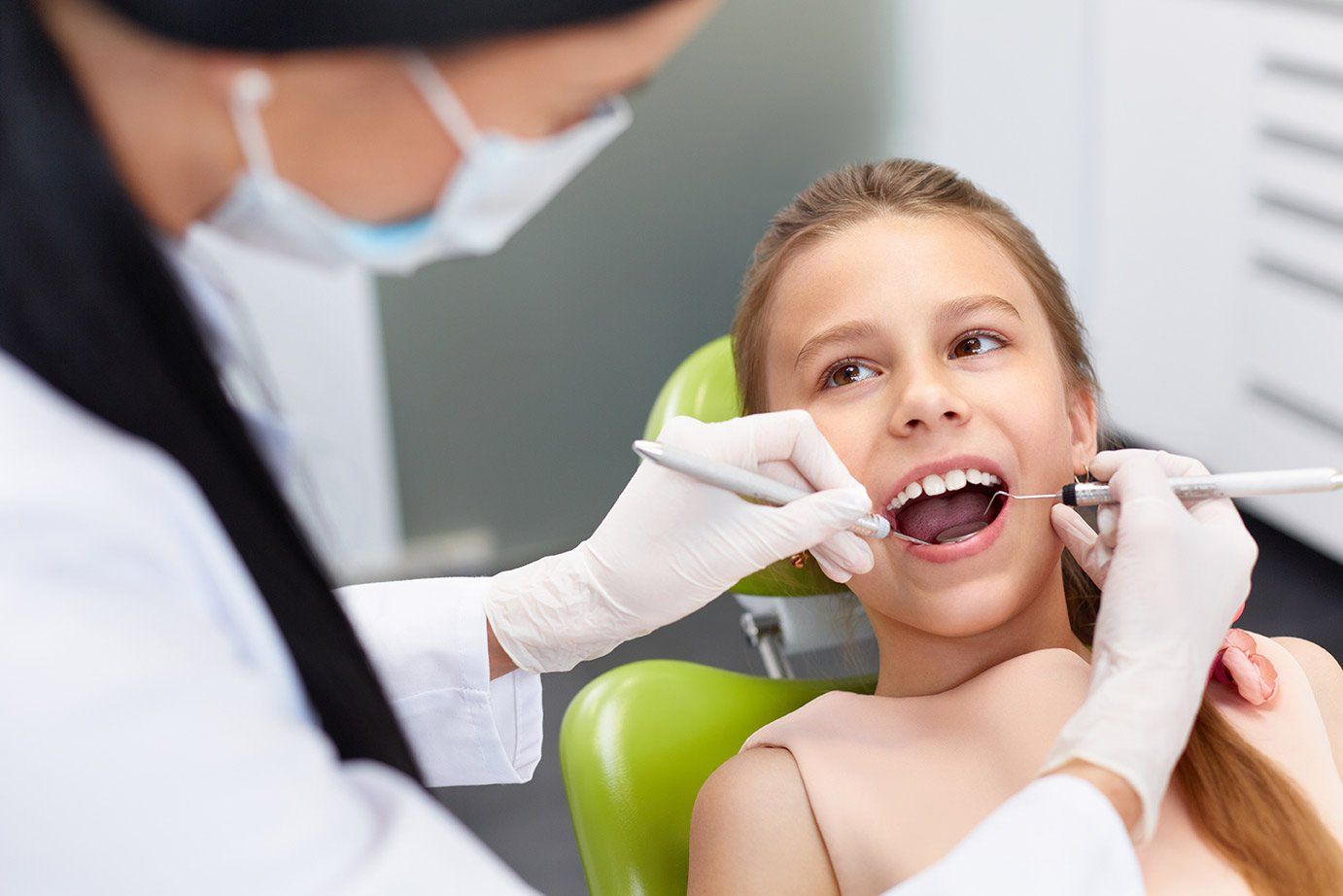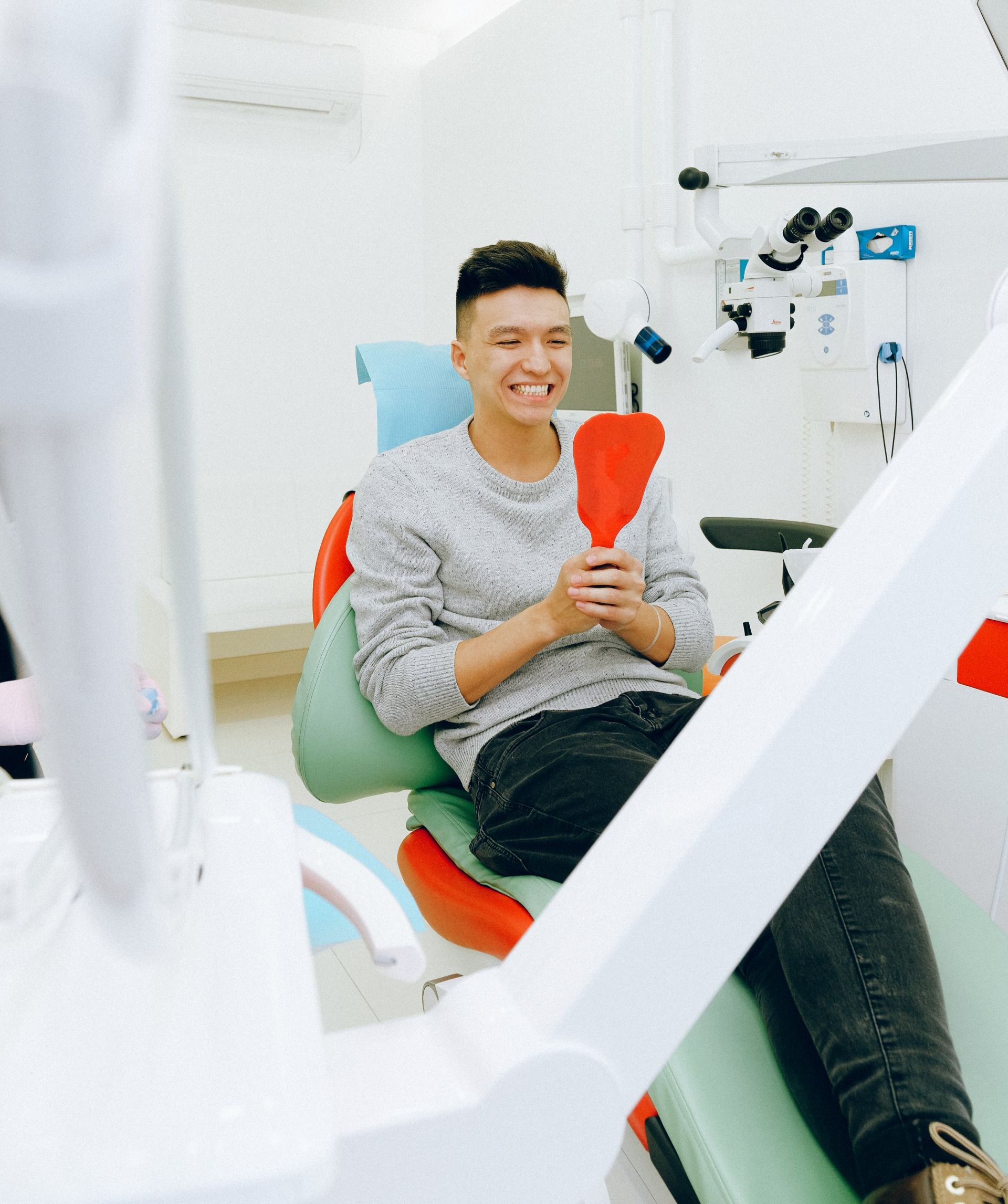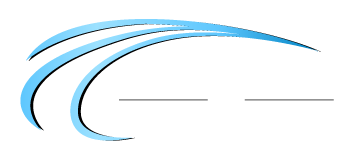Cleanings & Prevention
Let Your Smile Shine
An apple a day isn't enough to keep you away from the dentist. Get ahead of your dental care with regular scheduled cleanings.

Dental Exam
A comprehensive dental exam will be performed by your dentist at your initial dental visit. At regular check-up exams, your dentist and hygienist will include the following:
- Examination of diagnostic x-rays (radiographs):
Essential for detection of decay, tumors, cysts, and bone loss. X-rays also help determine tooth and root positions. - Oral cancer screening: Check the face, neck, lips, tongue, throat, tissues, and gums for any signs of oral cancer.
- Gum disease evaluation: Check the gums and bone around the teeth for any signs of periodontal disease.
- Examination of tooth decay: All tooth surfaces will be evaluated for restorative needs.
- Photo examination of existing restorations: Check current fillings, crowns, and teeth with intra-oral photos.
Professional Dental Cleaning
A comprehensive dental exam will be performed by your dentist at your initial dental visit. At regular check-up exams, your dentist and hygienist will include the following:
- Examination of diagnostic x-rays (radiographs):
Essential for detection of decay, tumors, cysts, and bone loss. X-rays also help determine tooth and root positions. - Oral cancer screening: Check the face, neck, lips, tongue, throat, tissues, and gums for any signs of oral cancer.
- Gum disease evaluation: Check the gums and bone around the teeth for any signs of periodontal disease.
- Examination of tooth decay: All tooth surfaces will be checked for decay with special dental instruments.
- Examination of existing restorations: Check current fillings, crowns, etc.


Home Care
The ADA recommends brushing your teeth at least twice a day, especially before bed! A proper brushing routine should take at least 2 minutes. A good way to make sure you are spending enough time brushing is to use a stop watch and time yourself. While brushing make sure:
- Brush the outside of all your teeth, the outside the part of your teeth that touches the inside of your cheeks
- Brush the inside, the part of your teeth that touch your tongue
- Brush the back teeth, the teeth in the way back are often neglected and can house a lot of plaque and tartar
- Brush the tops of your teeth, the chewing surfaces of your teeth have grooves that bacteria can stay in, brush them twice a day to help prevent cavities
- Brush your tongue to keep breath fresh and remove bacteria
Along with a regular brushing routine it is important to floss daily to prevent gingivitis. Proper flossing is an easy step to add into your oral hygiene routine and has extremely positive benefits. Flossing helps keep plaque at bay under the gum line and in between teeth in those tight little spaces. Removing the plaque under the gum line and between your teeth can help prevent tooth decay and gingivitis. Some flossing tips to keep in mind:
- Floss daily, make flossing part of your routine. Stick with it.
- Floss in between every tooth and gently wrap floss around tooth and gently push down on the gum line.
- Use a clean section of the floss for each tooth to make sure you are removing the plaque and not just moving it from tooth to tooth.
READY TO MAKE IT HAPPEN? SCHEDULE NOW.
